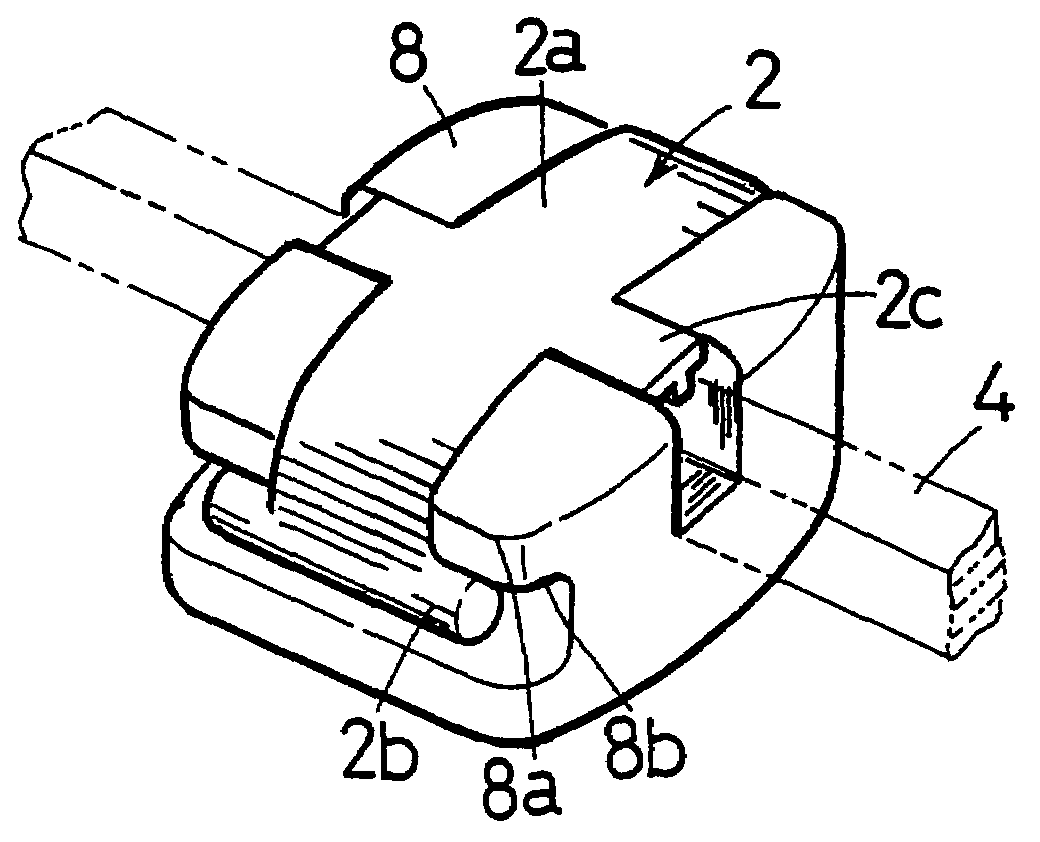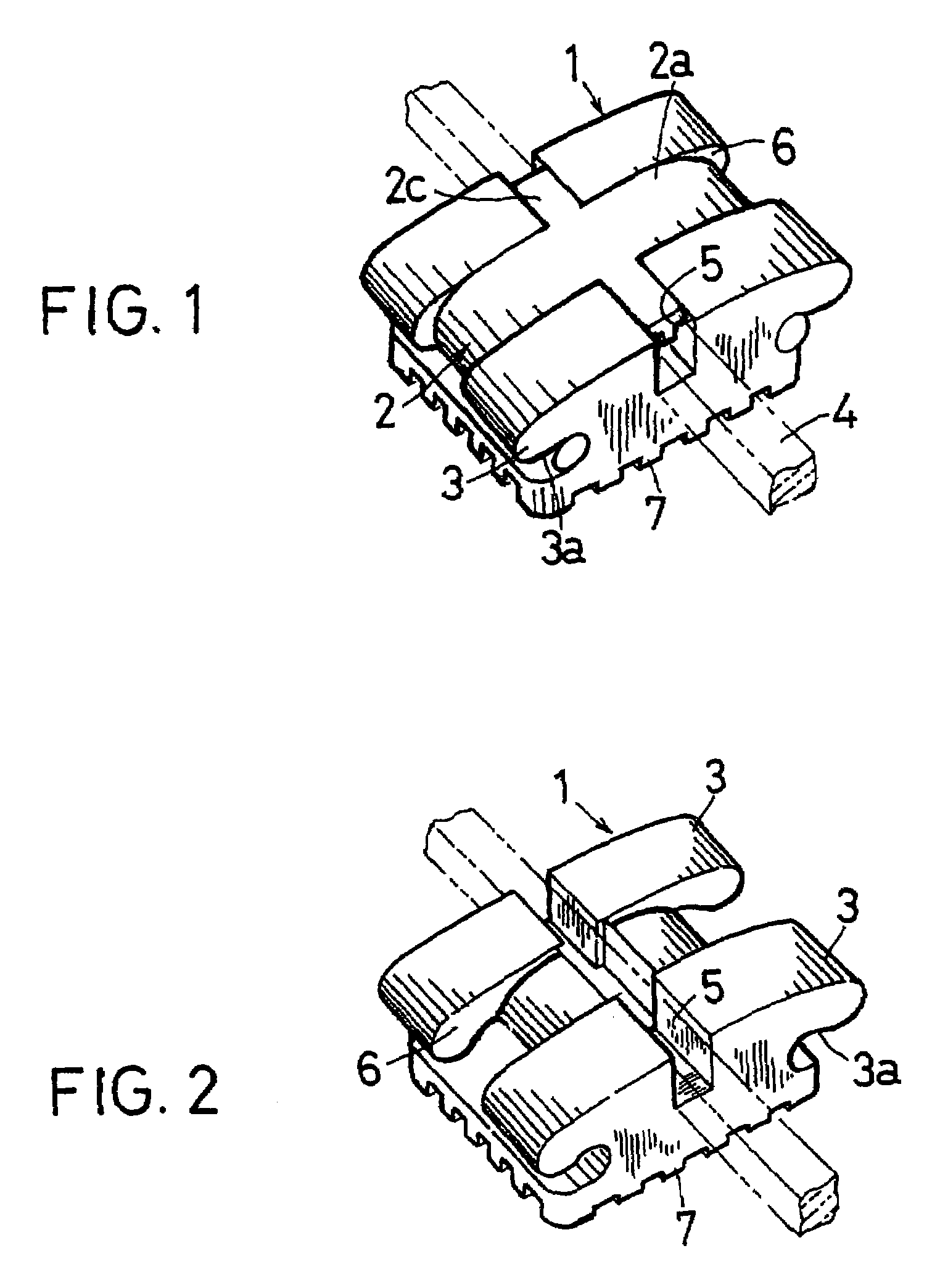Orthodontic wire ligating member
a wire ligating and orthodontic technology, applied in the field of orthodontic wire ligating members, can solve the problems of inability to achieve desired tooth movement, inability to fix the archwire to the bracket slot surface with an excessive pressing force, and inability to achieve pain in patients, etc., to achieve easy attachment and removal, improve aesthetics, and minimal unevenness
- Summary
- Abstract
- Description
- Claims
- Application Information
AI Technical Summary
Benefits of technology
Problems solved by technology
Method used
Image
Examples
Embodiment Construction
[0049]Embodiments of the present invention will be described below with reference to the accompanying drawings. FIG. 1 is an external view showing an embodiment of the orthodontic wire ligating member according to the present invention, in which it is used in a twin-type bracket 1. FIG. 2 is an external view showing only the bracket 1. The orthodontic wire ligating member 2 is used by being mounted on the bracket 1 as shown in FIG. 1. The bracket 1 shown in FIG. 1 is a twin-type bracket made of a transparent synthetic resin, which has two pairs of wings 3 disposed parallel to each other, i.e. four projecting portions (portions projecting outward like eaves). The bracket 1 has in the center thereof a U-groove shaped slot 5 for retaining an archwire 4 extending therethrough, i.e. a groove in which the archwire 4 is slidably inserted.
[0050]Regarding the bracket 1, a large number of different types of brackets are known, such as single-type brackets and archwire-guiding metallic groove ...
PUM
 Login to View More
Login to View More Abstract
Description
Claims
Application Information
 Login to View More
Login to View More - R&D
- Intellectual Property
- Life Sciences
- Materials
- Tech Scout
- Unparalleled Data Quality
- Higher Quality Content
- 60% Fewer Hallucinations
Browse by: Latest US Patents, China's latest patents, Technical Efficacy Thesaurus, Application Domain, Technology Topic, Popular Technical Reports.
© 2025 PatSnap. All rights reserved.Legal|Privacy policy|Modern Slavery Act Transparency Statement|Sitemap|About US| Contact US: help@patsnap.com



